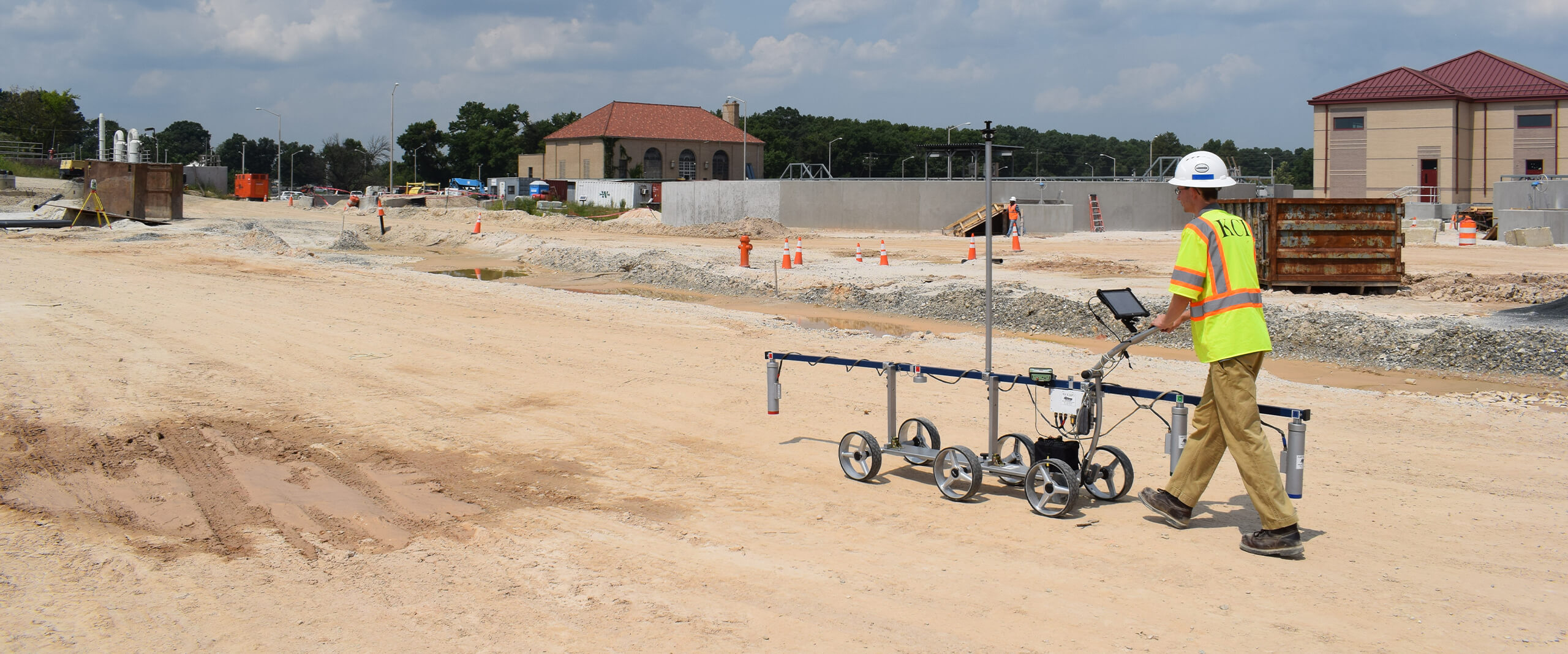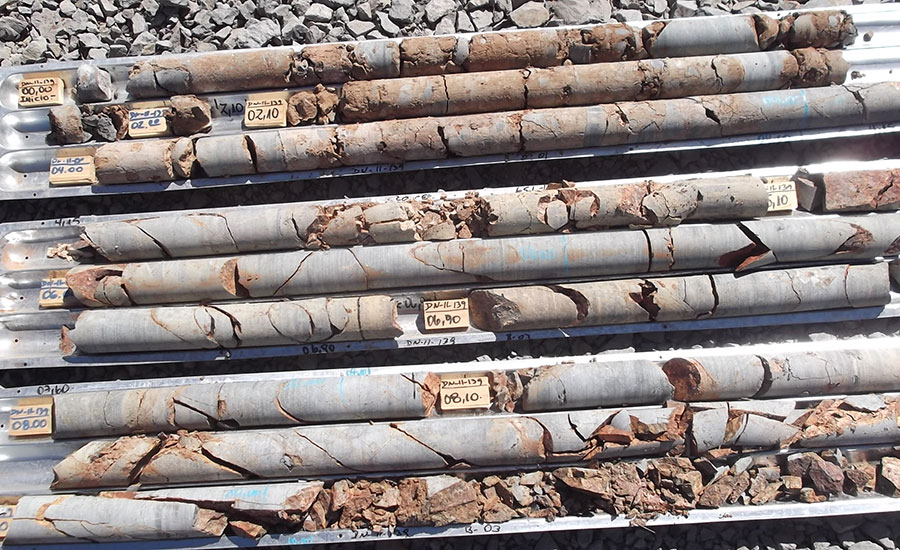The Value of Geotechnical Engineering in Dealing With Environmental Difficulties and Enhancing Building Security
Geotechnical design serves as a cornerstone in the crossway of ecological stewardship and construction safety and security, providing vital understandings right into the habits of dirt and rock under various conditions. By applying strategic website examinations and tailored reduction steps, geotechnical designers play an important duty in safeguarding both human lives and eco-friendly honesty.

Role of Geotechnical Design
Geotechnical engineering plays an essential function in the design and construction of facilities by addressing the behavior of soil and rock materials under various conditions. This area of design is crucial for recognizing the interaction between structures and the ground, that includes figuring out the load-bearing ability of soil, analyzing stability, and forecasting prospective negotiation or failing.
Geotechnical designers are in charge of carrying out website examinations, which involve tasting and testing dirt and rock to collect data on their chemical and physical buildings. This details is essential for designing foundations, keeping walls, and other earth-retaining frameworks that ensure security and longevity. Geotechnical engineering notifies the option of suitable building and construction approaches and products, therefore minimizing dangers associated with soil habits.
In addition, the combination of geotechnical design principles right into metropolitan planning and ecological administration is vital for addressing challenges such as ground contamination and groundwater administration. By comprehending geotechnical elements, engineers can create sustainable solutions that boost the strength of infrastructure against natural risks, while also promoting ecological stewardship. Eventually, the duty of geotechnical design is vital for accomplishing secure, sturdy, and environmentally conscious building and construction techniques.
Dirt Erosion Mitigation
Dirt erosion positions a considerable danger to both environmental stability and framework stability, affecting about 24 billion bunches of fertile dirt shed every year worldwide. This sensation is exacerbated by elements such as logging, urbanization, and inadequate farming techniques. Geotechnical engineering plays an essential duty in creating efficient soil erosion mitigation techniques that guard both the setting and building and construction tasks.
One technique entails the execution of disintegration control approaches such as greenery growing, which maintains dirt via origin systems. Furthermore, the building and construction of retaining walls and balconies can successfully reduce surface area overflow and protect prone areas from erosion. Proper drain layout is additionally crucial; it reduces water accumulation and guides excess runoff away from important frameworks.
In addition, geotechnical engineers employ dirt stablizing methods, such as the application of geotextiles and naturally degradable floor coverings, to improve soil cohesion and stop destruction - geotechnical companies in south africa. Normal tracking and analysis of erosion-prone sites make it possible for timely treatments, ensuring lasting sustainability. By integrating these methods, geotechnical engineering not just reduces the influences of soil erosion yet also adds to the durability of framework against ecological obstacles, ultimately promoting a more secure and more lasting developed setting
Groundwater Protection Techniques
Groundwater works as a crucial resource for alcohol consumption water, farming, and industrial processes, making its security essential for environmental sustainability and public wellness. Reliable groundwater protection techniques are essential in mitigating contamination risks and making sure the long life of this source.

Regular surveillance of groundwater high quality is additionally necessary, allowing early discovery of contamination sources and helping with timely removal efforts. Employing advanced innovations, such as geophysical studies and remote noticing, aids in recognizing potential dangers to groundwater books.
In addition, public education and stakeholder interaction are crucial, promoting community support for groundwater protection campaigns. all about geotechnical engineering. By integrating regulative actions, technological advancements, and community participation, we can produce an extensive framework that safeguards groundwater Learn More sources while advertising lasting growth and construction practices
Landslide Risk Monitoring
Landslides posture substantial threats to both human safety and security and framework, making effective danger management methods vital. Geotechnical engineering plays a critical duty in determining, evaluating, and mitigating landslide dangers. A comprehensive understanding of slope stability, soil mechanics, and hydrology is important for creating effective risk administration plans.
The very first step in landslide danger administration includes complete site examinations, that include geological mapping and dirt testing. These investigations help engineers evaluate the capacity for landslides by determining important aspects such as incline angles, soil composition, and water content. Making use of innovative modern technologies such as remote picking up and geophysical studies can improve the accuracy of these analyses.
As soon as dangers are identified, suitable mitigation actions can be carried out. These may include design options such as keeping wall surfaces, water drainage systems, and slope stabilization strategies. Additionally, keeping an eye on systems ought to be established to find indications of ground movement and adjustments in water levels, permitting positive interventions.

Enhancing Building Security
Building sites frequently present a myriad of dangers that can jeopardize employee safety and task honesty. Geotechnical engineering plays a vital role in boosting building and construction safety and security by giving vital insights into subsurface problems. With detailed soil click and rock evaluation, geotechnical designers can determine potential risks, such as dirt instability, groundwater problems, and seismic vulnerabilities, which might endanger the security of construction tasks.
Executing geotechnical remedies, such as proper foundation layout and the use of maintaining frameworks, mitigates these dangers substantially. These solutions not only make certain the stability of the structures being developed however also produce a more secure working environment for building employees.
In addition, cultivating a society of safety and security via training and adherence to developed safety and security methods better enhances construction site safety and security. By integrating geotechnical know-how into the planning and execution phases, building and construction projects can achieve greater security criteria, inevitably securing employees and making sure effective job completion.
Conclusion
In conclusion, geotechnical design acts as a vital self-control in promoting and tackling ecological obstacles building and construction safety and security. With effective soil disintegration mitigation, groundwater protection approaches, and landslide threat administration, geotechnical engineers contribute to the growth of durable infrastructure. The assimilation of these methods fosters a safer building and construction setting and check my blog improves the sustainability of civil design jobs. Ultimately, the proficiency of geotechnical designers is vital in protecting both natural deposits and human lives against possible risks.
Geotechnical engineering offers as a cornerstone in the crossway of ecological stewardship and building safety and security, providing critical insights right into the behavior of soil and rock under numerous problems. Geotechnical engineering notifies the option of ideal construction techniques and products, thereby reducing dangers linked with dirt behavior.
Geotechnical engineering plays an essential duty in creating effective soil disintegration reduction techniques that guard both the environment and building jobs.
Additionally, geotechnical designers use dirt stabilization methods, such as the application of geotextiles and naturally degradable floor coverings, to boost soil communication and protect against destruction. Via thorough soil and rock evaluation, geotechnical designers can recognize prospective risks, such as dirt instability, groundwater concerns, and seismic susceptabilities, which might endanger the safety and security of building and construction tasks.